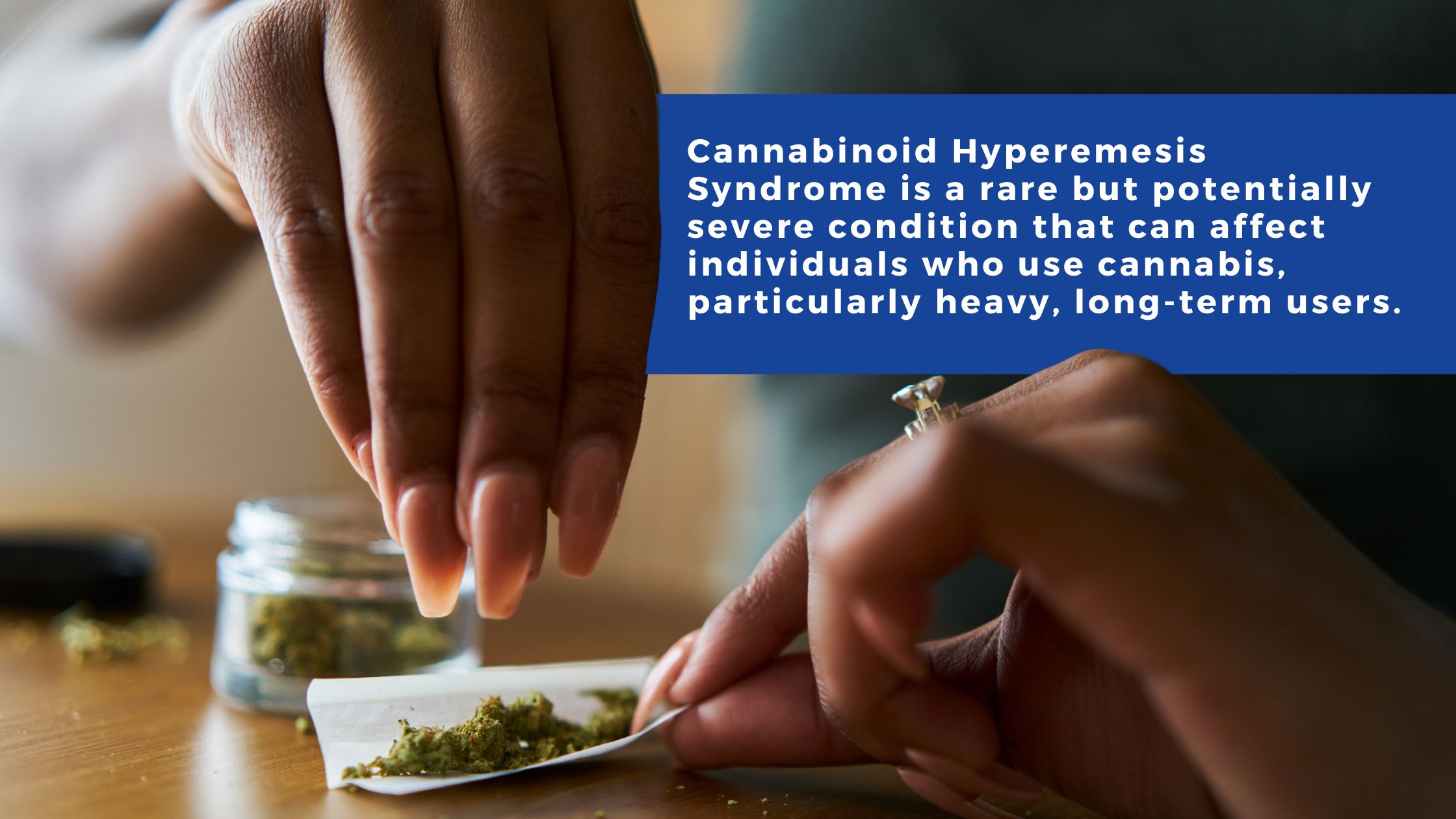What is Cannabinoid Hyperemesis Syndrome?


Written By
DreamLife RecoveryAs the legalization and usage of cannabis continue to rise globally, it’s essential to understand all facets of this versatile plant, including potential adverse effects. Cannabinoid hyperemesis syndrome (CHS) is a condition that, although rare, can have significant impacts on individuals who are heavy, long-term users of cannabis.
Characterized by cyclic episodes of debilitating nausea, vomiting, and abdominal pain, CHS is a paradoxical syndrome often overlooked due to the antiemetic properties commonly associated with cannabis.
In this article, we’ll explore what Cannabinoid Hyperemesis Syndrome is, its symptoms, causes, and treatment methods. Our goal is to raise awareness about CHS and provide valuable information for both medical professionals and cannabis users alike. Let’s dive in and unravel the mystery behind this condition.
Understanding Cannabinoids
Cannabinoids are a group of chemical compounds naturally produced by the cannabis plant. They are most famously represented by THC (Tetrahydrocannabinol) and CBD (Cannabidiol), but there are many other types as well.
These compounds interact with the body through the endocannabinoid system, a complex cell-signaling system that plays a key role in regulating a wide array of functions and processes, including sleep, mood, appetite, memory, reproduction, and pain.
Cannabinoids bind to cannabinoid receptors located throughout the body to exert their effects. Notably, THC is known for its psychoactive properties, causing the ‘high’ associated with cannabis use, while CBD is non-psychoactive and has been noted for its potential therapeutic benefits.
Factors such as genetic differences in cannabinoid receptors can influence the effects of cannabis on an individual. Understanding cannabinoids and their role in the body can aid in exploring their potential therapeutic applications.
Cannabis and the Body
Cannabis, both revered and feared for its effects, has a complex relationship with our bodies. The active compounds in cannabis, known as cannabinoids, interact with our endocannabinoid system, influencing various bodily functions.
THC, one of the most prevalent cannabinoids, is responsible for the ‘high’ feeling. It can affect perception, increase heart rate, and even impair memory and judgment over time. Another cannabinoid, CBD, is non-psychoactive and may offer potential therapeutic benefits.
However, prolonged cannabis use isn’t without risks. Regular use can lead to lung irritation, potentially mimicking the breathing problems seen in tobacco smokers. It’s also linked to certain mental health issues, especially when used heavily.
While some find relief in cannabis for pain and anxiety, it’s crucial to be aware of these potential risks, ensuring informed decisions about its use.
Cannabinoid Hyperemesis Syndrome Explained
Cannabinoid Hyperemesis Syndrome is a rare but potentially severe condition that can affect individuals who use cannabis, particularly heavy, long-term users. It’s characterized by cyclic episodes of intense nausea, vomiting, and abdominal pain.
Notably, patients with CHS may also exhibit compulsive bathing behavior, as hot showers or baths often provide temporary relief from symptoms.
CHS generally presents in two phases: prodromal and hyperemetic. The prodromal phase is marked by early morning nausea and abdominal discomfort, which can be mistaken for other gastrointestinal disorders.
On the other hand, the hyperemetic phase is more severe, involving intense vomiting, sweating, flushing, and abdominal pain lasting 24 to 48 hours.


CHS vs. Other Side Effects of Cannabis Use
Comparatively, common side effects of cannabis use include:
- Altered perception.
- Increased heart rate.
- Memory impairment.
- Potential lung irritation.
While these effects are generally transient and vary based on the amount used and method of consumption, CHS symptoms tend to persist and can significantly impact quality of life.
Despite cannabis’s recognized antiemetic properties, CHS represents a paradoxical reaction, underlining the importance of understanding this syndrome in the context of increasing global cannabis usage.
Symptoms and Diagnosis of CHS
Cannabinoid Hyperemesis Syndrome is often associated with chronic cannabis use, characterized by cyclical symptoms that significantly impact the individual’s quality of life. The common symptoms of CHS include:
- Ongoing nausea.
- Repeated episodes of vomiting.
- Abdominal pain.
- Decreased food intake, leading to weight loss.
Some patients may also experience anxiety, constipation, diarrhea, excessive thirst, sweating, and dry mouth.
Diagnosis of CHS is primarily clinical, based on patient history and symptom presentation. It often involves ruling out other potential causes of the symptoms, such as gastrointestinal disorders.
A unique feature in diagnosing CHS is the relief of symptoms with hot showers or baths, which is not typically seen in other conditions.
In some cases, the initial symptoms may be mild, such as feeling sick to the stomach and having belly pain without throwing up. However, if cannabis use continues, these symptoms can progress to more severe bouts of vomiting and nausea.
Early recognition and diagnosis of CHS are crucial to prevent unnecessary medical tests and to initiate appropriate treatment and counseling about cessation of cannabis use.
Treating and Preventing CHS
Treatment of Cannabinoid Hyperemesis Syndrome often involves addressing the immediate symptoms and promoting long-term cessation of cannabis use. During the hyperemetic phase, rehydration with intravenous fluids and dextrose-containing fluids may be required due to severe vomiting.
Despite the classic resistance of CHS to antiemetic therapy, some pharmacological treatments have shown promise. These include benzodiazepines like lorazepam and diazepam, antipsychotic medications like haloperidol and olanzapine, and other drugs like fentanyl, promethazine, methadone, nabilone, levomepromazine, piritramide, and pantoprazole. Topical capsaicin cream has also been used to manage symptoms.
Preventing CHS
Prevention of CHS primarily involves abstaining from cannabis use. It’s important to understand that CHS is not permanent, and symptoms typically cease upon discontinuation of cannabis. If an individual is struggling with cessation, they may benefit from counseling or support groups.
While there are strategies to manage the symptoms of CHS, the most effective treatment and prevention method is complete cessation of cannabis use.
CHS Treatment in Pennsylvania
Cannabinoid Hyperemesis Syndrome is a serious condition that requires professional intervention. At DreamLife Recovery in PA, we offer customized, person-first treatments for alcohol and drug addiction recovery, including CHS.
Recovery from CHS is within your reach. Don’t let this condition control your life. To reach out to DreamLife Recovery today, dial (855) 384-5808. Alternatively, you can fill out this contact form to get started.







